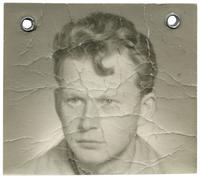Rudolf Volráb Colours of Disquiet
National Gallery in Prague, Trade Fair Palace
21. January 2014 - 25. Mai 2014
Curators: Helena Musilová, Jaroslav Bárta
“What does it matter how and when we are going to die as long as we can observe in good health?”
Marcel Proust
The 1960s in Czechoslovakia were one of the country's most progressive periods in both the social and cultural spheres when art ranked among the significant impulses of the developing, free thinking society. During a relatively short period, the artistic scene was entered by an array of outstanding creative personalities who quite fundamentally determined the character of Czech or even Central-European art of the last third of the 20th century.
These included the painter, draughtsman and graphic artist Rudolf Volráb, a coeval of Vladimír Kopecký, Karel Nepraš and other crucial personalities of Czech art during the latter half of the 20th century. Volráb was, unfortunately, forestalled in the development of his creative skills by his premature death in 1969. Also, the following 20 years of the so-called "normalization" more or less erased his name from the history of Czech fine arts. And yet in his work, Volráb arrived at an original solution of treating shape and colour; in fact, his entire oeuvre - an extensive complex of drawings, paintings and objects - is a remarkable proof of innovative thinking in general. From the point of subjects, we can talk about figuration here, albeit in a wider sense where figural morphology serves as the basis for various approaches to form and content. His surprisingly colourful, provocative works full of inner dynamics and motion refer to the fascination with and almost obsessive inspecting of the female, and sometimes also male, body and its details, often transformed to universally comprehensive symbols.
On one hand, it is rather a challenge to attempt a structuring of the oeuvre of an artist who himself had no chance to thoroughly present it during his lifetime and moreover died prematurely. On the other hand, it requires great responsibility - more than in other cases, it is an interpretation to a considerable extent. Taking the relatively short period of Volrab's intense creative work into account, the retrospective does not follow any chronological order; also, Volrab would continuously return to some ideas, rendering the studies that had appeared in some drawings in a more definitive form somewhat later. The curators thus decided to arrange the exhibition thematically to accentuate the main subjects or features by which Volrab's oeuvre can be characterized.
The exhibition is complemented by the monograph.





